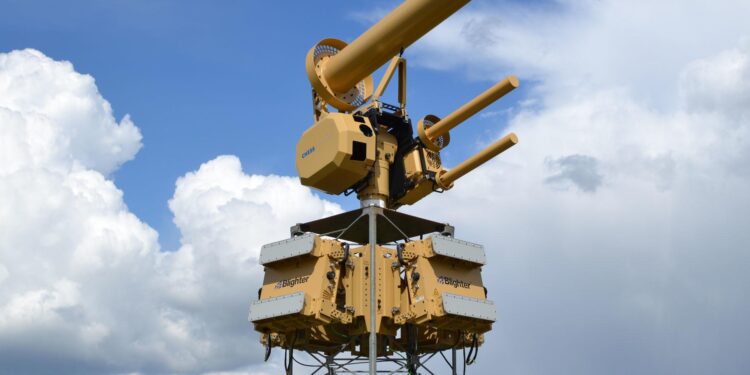Lithuania has intensified its drone defense measures amid ongoing efforts to locate an unidentified unmanned aerial vehicle (UAV) believed to have originated from neighboring Belarus. The Baltic nation’s heightened vigilance reflects growing concerns over airspace security in the region, as authorities continue their investigation into the mysterious UAV’s origins and purpose. The development underscores Lithuania’s commitment to safeguarding its borders amidst increasing geopolitical tensions.
Lithuania Enhances Drone Surveillance Capabilities Amid Rising Security Concerns
In response to the recent incursions of unidentified aerial vehicles along its borders, Lithuania has significantly expanded its drone detection and countermeasure systems. The Ministry of Defence confirmed upgrades to radar arrays across key strategic points, enhancing real-time tracking and interception capabilities. This move follows ongoing investigations into an unmanned aerial vehicle believed to have originated from Belarus, prompting heightened readiness amid growing regional tensions.
Key enhancements include:
- Deployment of advanced multi-sensor drone detection units combining radar, electro-optical, and infrared technologies
- Strengthened coordination between military and civilian airspace monitoring agencies
- Investment in rapid response drone interception teams equipped with electronic jamming devices
| Feature | Impact |
|---|---|
| Multi-sensor detection | Improved identification accuracy |
| Integration with air defence | Faster threat neutralization |
| Electronic jamming | Reduced UAV operational range |
Authorities Intensify Search Operations for Unidentified UAV Originating From Belarus
Lithuanian security forces have ramped up their defensive measures following reports of an unauthorized UAV detected near the nation’s eastern border. The drone, believed to have originated from Belarus, has prompted intensified aerial and ground search operations involving multiple agencies. Authorities are deploying radar systems, electronic countermeasures, and rapid response teams in a coordinated effort to locate and neutralize the UAV. Security officials have emphasized the importance of vigilance amid increasing drone incursions in the region, highlighting the evolving risks to national airspace sovereignty.
Key elements of the ongoing search and defence strategy include:
- 24/7 radar monitoring of border airspace to track unauthorized flights
- Deployment of anti-drone technology to disrupt potential surveillance or hostile activity
- Collaboration with NATO partners to share intelligence and resources
- Public safety alerts issued for residents near border zones
| Response Measure | Status | Responsible Agency |
|---|---|---|
| Border Radar Surveillance | Active | Lithuanian Air Force |
| Electronic Disruption Systems | Deployed | Security Services |
| Ground Search Teams | On Alert | Border Guards |
| NATO Intelligence Sharing | Ongoing | Ministry of Defence |
Experts Urge Strengthened Cross-Border Collaboration to Counter Emerging Aerial Threats
Specialists emphasize that the complexity and stealth capabilities of modern UAVs necessitate enhanced cooperation among neighboring states to effectively monitor and neutralize aerial incursions. Recent events highlighting the persistent search for an unidentified drone reportedly originating from Belarus have spurred calls for joint intelligence-sharing frameworks and harmonized airspace surveillance protocols. Experts argue that isolated national efforts are insufficient to address the evolving threats posed by sophisticated unmanned systems engineered for covert operations.
Key recommendations put forth include:
- Real-time data exchange between border control and defense agencies.
- Joint exercises to simulate drone interception and signal jamming.
- Investment in cutting-edge radar and counter-drone technologies.
- Establishment of cross-border rapid response teams.
| Initiative | Purpose | Expected Outcome |
|---|---|---|
| Shared Drone Alert System | Instant notification of UAV intrusions | Faster intercept coordination |
| Binational Training Programs | Skills enhancement for operators | Improved containment success |
| Joint R&D Projects | Develop advanced detection tech | Greater aerial threat resilience |
To Wrap It Up
As Lithuania intensifies its drone defense measures amid ongoing searches for the unidentified UAV believed to have originated from Belarus, the situation underscores the growing security challenges faced by the Baltic region. Authorities remain vigilant, continuing investigations to assess potential risks and prevent further airspace incursions. The developments highlight the importance of regional cooperation and advanced surveillance capabilities in addressing emerging aerial threats. Updates will follow as more information becomes available.
















